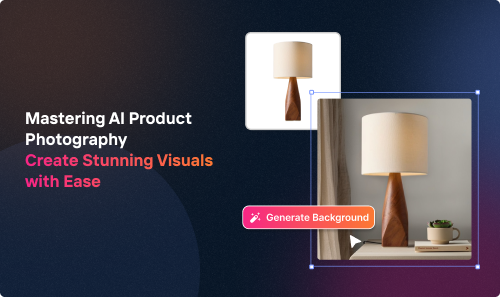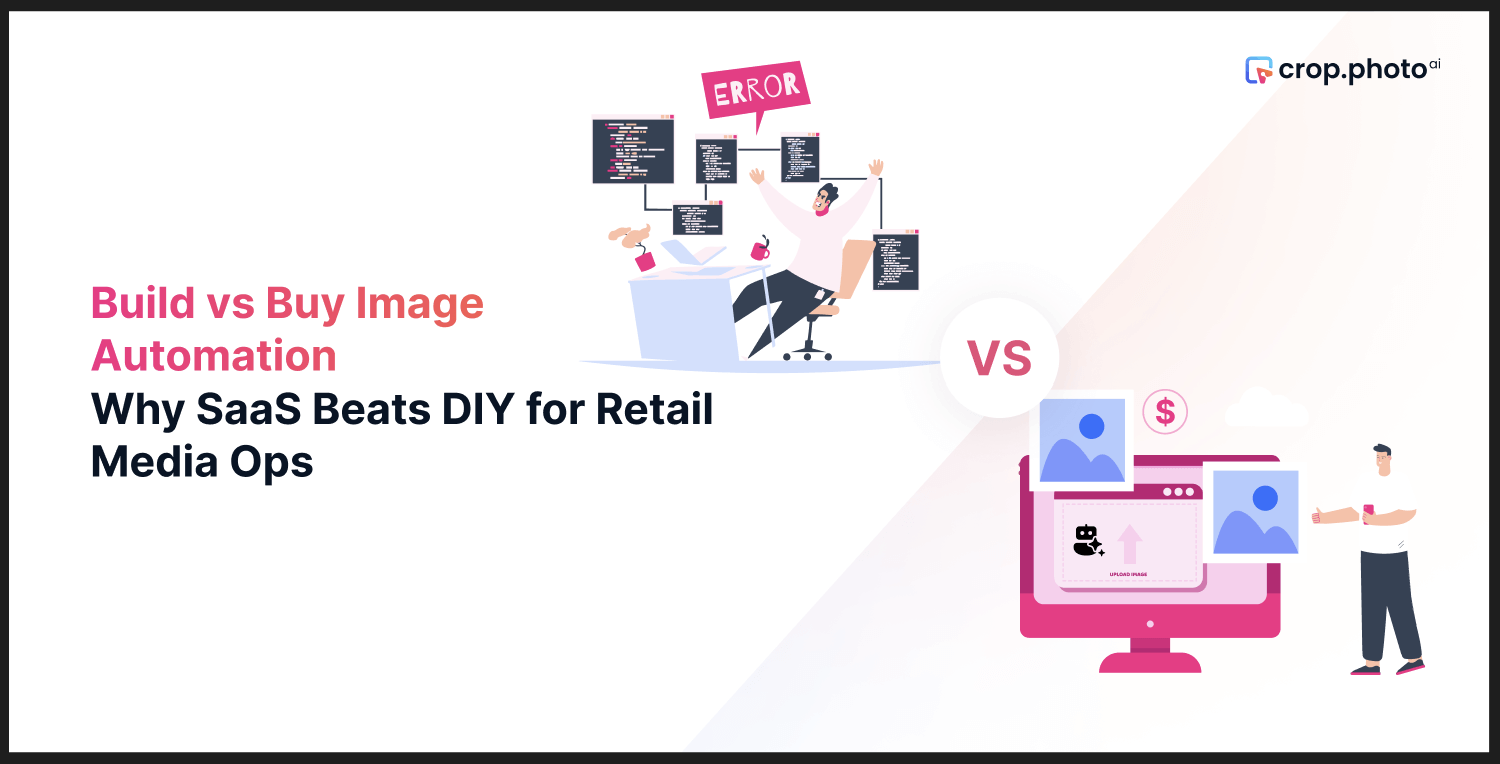The challenge isn’t generating one good image; it’s producing a thousand consistent ones that align with brand standards, lighting, and tone across marketplaces – at the same time.
While consumer-facing tools like DALL-E, Midjourney, Veo, Nano, Sora or Firefly are incredible for creative exploration, they fall apart when put into production pipelines for e-commerce. Their design goal is artistic variety, not brand consistency. When you’re managing 50,000+ SKUs or seasonal drops across Amazon, Zalando, and your own Shopify store, that distinction makes all the difference.
From inconsistent lighting and hallucinated product features to completely mismatched models and styling, the output is rarely usable out of the box, let alone at production scale. And here's the critical limitation that most brands discover too late: these tools can't process your own brand models. You're stuck with generic AI-generated faces that don't match your brand aesthetic or model diversity standards.
This isn’t a problem of creativity or model power. It’s a lack of structure, control, and consistency – something generic AI tools weren’t designed for. And that’s exactly why multi-modal systems with brand control baked in are becoming the standard for production-grade content.
When a Single Beautiful Image Isn’t Enough
Big foundation models are undeniably impressive when you want creative, eye-catching visuals. But that very strength turns into a liability when you’re trying to build a catalog that looks unified and professional. Feed them a prompt for “a woman wearing this t-shirt in a studio light background,” and they’ll return something visually stunning. The issue arises when you need 500 variations of that same look for your product catalog.
Lighting shifts subtly between warm and cool tones. Shadows fall in random directions. A “standing pose” prompt sometimes produces a model sitting or leaning. Even when you specify a studio setup, the AI may decide to insert an outdoor scene or stylistic background. The result: a visually inconsistent catalog that looks more like a Pinterest board than a professional brand page.
For global brands, this inconsistency is catastrophic. The first 50 products might look like a summer shoot; the next 50 could appear cold and moody. Model diversity fluctuates wildly, and the generated faces rarely match your approved brand talent. Worse, foundation models can’t use your own models or maintain your photography style. They rely on generic datasets trained on public content, producing results detached from your brand identity.
Then there’s the wild card: hallucination. The AI might invent logos, pockets, patterns, or design details that don’t exist. Garments may warp or misrepresent shapes. Colors might shift subtly. Because each image generation is independent and doesn’t “remember” past successes, you can’t anchor new results to match prior ones. Every image feels like a brand-new experiment.
Consider a brand trying to generate 500 product-on-model images. The result: wildly varying model styles, poses, lighting, and backgrounds. Fixing this manually can stretch across days. That’s why foundation models, built to prioritize creativity, struggle in production environments that demand consistency.
Why “Nano Banana” Models Still Miss the Mark
The advanced models such as “Nano Banana” promised to fix these problems by prioritizing speed. They generate images in seconds and run efficiently on edge devices or mid-tier GPUs. For teams working with large volumes, that sounds ideal – until you see the results.
On the surface, models like Nano Banana for image generation or Sora and Veo for video creation are impressive. They can produce highly realistic outputs, render visuals fast, and simulate advanced creative styles. But when you look beyond the novelty and try using them in actual brand workflows, they fall short in ways that really matter.
Take Nano Banana models, for instance. They’re fast and lightweight, sure. But they still treat each image as a standalone generation. There’s no batch awareness, no consistency enforcement, and no way to lock in your brand’s lighting, posing, or styling choices across hundreds of assets. You end up generating 100 images in two minutes and then spending hours trying to fix the inconsistencies those two minutes created.
Sora and Veo, despite their cinematic capabilities, are built for storytelling and creative experimentation, not structured video outputs based on specific brand controls. Ask them to generate the same video concept ten times and you’ll get ten wildly different looks, pacing styles, and framing choices. That might work for filmmakers or advertisers exploring moodboards, but for production teams that need precision, these models become more of a sandbox than a workflow solution.
What “Production‑Ready” Really Demands
When brands talk about production-ready AI, they’re not referring to aesthetic beauty. They’re talking about predictability: consistent lighting, reliable model poses, accurate colors, and zero hallucinations.
For a clothing brand, that means every item in a collection shares the same lighting setup and exposure. The shadow intensity is identical across shots. The model poses match the brand’s lookbook direction—front, three-quarter, and side view—and the garments drape naturally without distortion. You can reuse your approved brand models, ensuring diversity without visual drift.
Quality goes beyond visuals. Marketplace-ready resolution (e.g., 4000×4000 for Amazon) is essential, as is pixel-level sharpness for zoom features. AI outputs must pass automated checks for exposure, contrast, and color accuracy. The system must also respect brand integrity—no invented logos, no altered hues for flagship colors.
And since every brand defines “style” differently, AI must adapt accordingly. Minimalist labels need restraint; lifestyle brands want energy; luxury brands demand editorial polish. Production-ready AI allows those differences to exist while keeping them consistent within their category.
When a production pipeline works, the output is predictable. Upload 1,000 flatlays, and you get back 1,000 product-on-model images with the same lighting, proportions, and framing. Manual reviews drop to under 5%, and creative teams focus on campaigns, not corrections.
What’s missing in all these tools isn’t technical horsepower – it’s operational intelligence. They don’t understand what product catalog management looks like. They don’t maintain context between sessions. They don’t process image batches with defined settings. They don’t let you upload 100 SKUs, apply a preset recipe, and walk away.
Mulit-modal AI pipeline: A solution to all these problems
The only sustainable way to achieve production-grade consistency is through multi-modal AI pipelines systems that combine vision AI, brand controls, and consistency enforcement.
The process begins with Vision AI, which analyzes the source product image before generation. It identifies garment type, texture, and color, understanding how the fabric behaves. It knows that a silk blouse reflects light differently than denim, and adjusts accordingly. It maps product categories like tops, shoes, accessories, etc., so it can assign the right pose and lighting from the start.
Next comes brand control. Instead of prompting ad-hoc instructions, teams define pre-approved lighting setups, pose libraries, and model selections that align with their brand aesthetic. Luxury brands might use high-contrast editorial lighting, while everyday wear labels prefer natural daylight. The AI adheres to these recipes automatically, just as a studio photographer would follow a creative brief.
Consistency enforcement ensures those recipes persist across every generation. Batch memory retains previous successes, reusing lighting and camera parameters for similar SKUs. A quality gate system checks each output for exposure, artifacts, and color accuracy before it’s approved. Deviations trigger auto-regeneration or human review.
Finally, production integration ties everything together. SKU metadata from your DAM or PIM tells the AI which category rules to apply. Bulk processing runs thousands of images simultaneously, while automated quality checks and file naming keep everything organized for export.
The result: 1,000 product-on-model images, 95% brand-compliant, delivered in a few hours. Instead of wrestling with inconsistent generations, creative teams focus on brand storytelling and campaign execution.
This approach is exactly how Crop.photo structures its pipeline. It’s not just about AI generation—it’s about making that AI fit inside real production ecosystems where thousands of assets flow daily.
From Creative Sandbox to Production System
Generic AI tools will always have a place for ideation. They’re brilliant for mood boards, campaign mockups, or creative exploration. But scaling them for commercial use is a different game altogether. Production workflows demand accountability, predictability, and brand control, qualities that consumer tools were never designed for.
Multi-modal AI systems like Crop.photo’s pipeline are built for that world. They merge creative flexibility with industrial reliability. Instead of chasing endless variety, they optimize for brand-controlled consistency – the metric that actually drives conversion and trust.
For teams managing thousands of SKUs, the decision is straightforward: either spend weeks cleaning up inconsistent outputs, or spend hours generating market-ready visuals that meet your brand’s exact standards.
The future of e-commerce content creation isn’t more AI variety. It’s intelligent, brand-aware consistency that scales.


.png)



